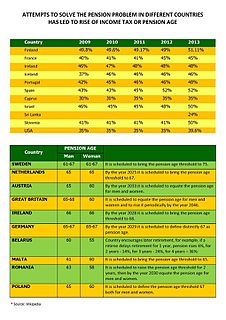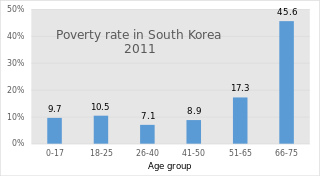Related Research Articles

A pension is a fund into which a sum of money is added during an employee's employment years and from which payments are drawn to support the person's retirement from work in the form of periodic payments. A pension may be a "defined benefit plan", where a fixed sum is paid regularly to a person, or a "defined contribution plan", under which a fixed sum is invested that then becomes available at retirement age. Pensions should not be confused with severance pay; the former is usually paid in regular amounts for life after retirement, while the latter is typically paid as a fixed amount after involuntary termination of employment before retirement.
The Canada Pension Plan is a contributory, earnings-related social insurance program. It forms one of the two major components of Canada's public retirement income system, the other component being Old Age Security (OAS). Other parts of Canada's retirement system are private pensions, either employer-sponsored or from tax-deferred individual savings. As of Jun 30, 2022, the CPP Investment Board manages over C$523 billion in investment assets for the Canada Pension Plan on behalf of 20 million Canadians. CPPIB is one of the world's biggest pension funds.
Pensions in the United Kingdom, whereby United Kingdom tax payers have some of their wages deducted to save for retirement, can be categorised into three major divisions - state, occupational and personal pensions.
The pensions crisis or pensions timebomb is the predicted difficulty in paying for corporate or government employment retirement pensions in various countries, due to a difference between pension obligations and the resources set aside to fund them. The basic difficulty of the pension problem is that institutions must be sustained over far longer than the political planning horizon. Shifting demographics are causing a lower ratio of workers per retiree; contributing factors include retirees living longer, and lower birth rates. An international comparison of pension institution by countries is important to solve the pension crisis problem. There is significant debate regarding the magnitude and importance of the problem, as well as the solutions. One aspect and challenge of the "Pension timebomb" is that several countries' governments have a constitutional obligation to provide public services to its citizens, but the funding of these programs, such as healthcare are at a lack of funding, especially after the 2008 recession and the strain caused on the dependency ratio by an ageing population and a shrinking workforce, which increases costs of elderly care.
In Australia, superannuation, or just super, is the term for retirement pension benefit funds. Employers make compulsory contributions into these funds on behalf of their employees.

A defined contribution (DC) plan is a type of retirement plan in which the employer, employee or both make contributions on a regular basis. Individual accounts are set up for participants and benefits are based on the amounts credited to these accounts plus any investment earnings on the money in the account. In defined contribution plans, future benefits fluctuate on the basis of investment earnings. The most common type of defined contribution plan is a savings and thrift plan. Under this type of plan, the employee contributes a predetermined portion of his or her earnings to an individual account, all or part of which is matched by the employer.
A private pension is a plan into which individuals contribute from their earnings, which then will pay them a private pension after retirement. It is an alternative to the state pension. Usually, individuals invest funds into saving schemes or mutual funds, run by insurance companies. Often private pensions are also run by the employer and are called occupational pensions. The contributions into private pension schemes are usually tax-deductible. This is similar to the regular pension.
National Pension System Trust is a specialised division of Pension Fund Regulatory and Development Authority which is under the jurisdiction of Ministry of Finance of the Government of India. The National Pension System (NPS) is a voluntary defined contribution pension system in India. National Pension System, like PPF and EPF is an EEE (Exempt-Exempt-Exempt) instrument in India where the entire corpus escapes tax at maturity and entire pension withdrawal amount is tax-free.
Defined benefit (DB) pension plan is a type of pension plan in which an employer/sponsor promises a specified pension payment, lump-sum, or combination thereof on retirement that depends on an employee's earnings history, tenure of service and age, rather than depending directly on individual investment returns. Traditionally, many governmental and public entities, as well as a large number of corporations, provide defined benefit plans, sometimes as a means of compensating workers in lieu of increased pay.
Pensions in Norway fall into three major divisions; State Pensions, Occupational Pensions and Individual or personal Pensions.
Pensions in France fall into five major divisions;
Pensions in Spain consist of a mandatory state pension scheme, and voluntary company and individual pension provision.
The Swiss pension system rests on three pillars:
Pensions in Ukraine provide income for retirees in Ukraine. They are provided pursuant to the Law of Ukraine on Compulsory State Pension Insurance that specifies a three-tiered pension provision system.

There are various types of Pensions in Armenia, including social pensions, mandatory funded pensions, or voluntary funded pensions. Currently, Amundi-ACBA and Ampega act as the mandatory pension fund managers within Armenia.
Pensions in Israel consist of a state old age pension system, a private pension system which employees are legally required to participate in and that is supervised and regulated by the government, and a pension system for civil servants.
Compared to other liberal democracies, Ireland's pension policies have average coverage, which includes 78 percent of the workforce, and it offers different types of pensions for employees to choose from. The Irish pension system is designed as a pay-as-you-go program and is based on both public and private pension programs.

South Korea's pension scheme was introduced relatively recently, compared to other democratic nations. Half of the country's population aged 65 and over lives in relative poverty, or nearly four times the 13% average for member countries of the Organisation for Economic Co-operation and Development (OECD). This makes old age poverty an urgent social problem. Public social spending by general government is half the OECD average, and is the lowest as a percentage of GDP among OECD member countries.
Pensions in Denmark consist of both private and public programs, all managed by the Agency for the Modernisation of Public Administration under the Ministry of Finance. Denmark created a multipillar system, consisting of an unfunded social pension scheme, occupational pensions, and voluntary personal pension plans. Denmark's system is a close resemblance to that encouraged by the World Bank in 1994, emphasizing the international importance of establishing multifaceted pension systems based on public old-age benefit plans to cover the basic needs of the elderly. The Danish system employed a flat-rate benefit funded by the government budget and available to all Danish residents. The employment-based contribution plans are negotiated between employers and employees at the individual firm or profession level, and cover individuals by labor market systems. These plans have emerged as a result of the centralized wage agreements and company policies guaranteeing minimum rates of interest. The last pillar of the Danish pension system is income derived from tax-subsidized personal pension plans, established with life insurance companies and banks. Personal pensions are inspired by tax considerations, desirable to people not covered by the occupational scheme.

Public pensions in Greece are designed to provide incomes to Greek pensioners upon reaching retirement. For decades pensions in Greece were known to be among the most generous in the European Union, allowing many pensioners to retire earlier than pensioners in other European countries. This placed a heavy burden on Greece's public finances which made the Greek state increasingly vulnerable to external economic shocks, culminating in a recession due to the 2008 financial crisis and subsequent European debt crisis. This series of crises has forced the Greek government to implement economic reforms aimed at restructuring the pension system and eliminating inefficiencies within it. Measures in the Greek austerity packages imposed upon Greek citizens by the European Central Bank have achieved some success at reforming the pension system despite having stark ramifications for standards of living in Greece, which have seen a sharp decline since the beginning of the crisis.
References
- ↑ Blank, Florian; Logeay, Camille; Türk, Erik; Wöss, Josef; Zwiener, Rudolf (2016). "Why Is Austria's Pension System So Much Better Than Germany's?" (PDF). Intereconomics. 51 (3): 118–125. doi:10.1007/s10272-016-0589-8. hdl: 10419/191156 . S2CID 156368112.
- ↑ Quessier, Monika; Whitehouse, Edward; Whiteford, Peter (October 18, 2007). "The public–private pension mix in OECD countries". Industrial Relations Journal. 38 (6).
- ↑ "Austria: Pension Projections 2004- 2050" (PDF). Retrieved 7 December 2017.
- 1 2 3 "Pension system in Austria - Pension Funds Online". Pension Funds Online. Wilmington plc. Retrieved 7 December 2017.
- 1 2 Austria, Embassy of. "Pensions, Retirement Benefits & Social Security". Austrian Embassy Washington. Retrieved 7 December 2017.
- ↑ Schmitz, Stefan. "The Governance of Occupational Pension Funds and the Politico-Economic Implications: The Case of Austria". SSRN 775325.
- 1 2 3 Keuschnigg, Christian; Keuschnigg, Mirela (2005). "Aging, Labor Markets, and Pension Reform in Austria". The Reform of Bismarckian Pension Systems. Changing Welfare States. Amsterdam University Press. pp. 51–58. ISBN 9789053567401. JSTOR j.ctt46n0cr.7.
- ↑ Busemeyer, Marius (25 January 2007). "Pension Reform in Germany and Austria: System Change vs. Quantitative Retrenchment". West European Politics. 28 (3): 569–591. doi:10.1080/01402380500085830. S2CID 406087.
- ↑ Anagnoson, Theodore (2008). "Do They Know Something We Don't?". Public Administration Review. 68 (2): 391–394. doi:10.1111/j.1540-6210.2007.00871.x.
]